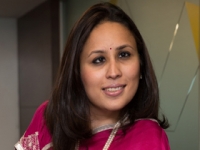“What’s in a name? That which we call a rose by any other name would smell as sweet.”
– William Shakespeare
Last year, when I was asked what is the most significant event in 2017 in the mutual fund industry that would carry over into 2018, my answer without doubt was the implications of the SEBI scheme categorization guidelines that were issued in late 2017.
Yes, while no doubt there will be elections, global developments, news around monetary policy and much more, for all of us as mutual fund investors, the implications of these guidelines and the subsequent changes to funds are real and live in our portfolios today. Funds that you may have been used to for years, now get a new name, but does a new name mean a new identity? To answer, a few thoughts on scheme mergers and what it means for you.
How does the world look after this?
In a few words, for an investor and for an advisor, as well as for an AMC, better and simpler. For the definition of what you are getting in a fund will become a lot sharper – a large cap fund, will now clearly have 80% of its allocation to the top 100 names by market capitalization. This means that asset allocation will now be clearer and more accurate, as funds are forced to become more true to label in what they deliver. While the regulations provide in each category for some flexibility that is essential for fund managers to be effective, for instance, the 20% free allocation in large cap categories, as long as funds operate within the spirit of the regulations and category, investors will be the beneficiaries. Comparisons between funds will also become significantly easier for investors and advisors, because “ABC’s midcap fund” will compete on the same parameters as “XYZ’s midcap fund”. Finally, with clearly defined vanilla funds out there, product innovation will only increase in the long term, and new funds will exist when they bring differentiated ideas to the table rather than replicating ideas that are already available.
Too many or too few – what do these categories mean?
While the number of ultimate categories may appear overwhelming, and there is no right answer to whether there are too many or too few, remember that for most investors most of the solutions lie in a few categories. One framework to think about the new order is to bucket fund categories into core, satellite, and tactical. Core categories as the name suggests are all weather categories, which form the large chunk of your asset allocation. Satellite categories, are also all weather categories, but typically carry a higher risk, and could form a smaller, but also permanent portion of your asset allocation. Tactical categories, are need or opportunity based categories and form part of your portfolio as and when the opportunity arises.
In the equity category for instance, large and midcap is an excellent core category for those who want to attain basic equity exposure, providing a blend of both cap ranges, while providing the scope for alpha that may not exist in the pure play large cap category. Multi-cap, an equally flexible category, is also a core equity category, at a slightly higher risk grade, while both mid cap funds and small cap funds can be satellite funds, and thematic funds the tactical allocation.
Fixed income has a number of categories, sharply defined by maturity and credit quality, and for most investors, the core allocation will come from low duration funds, short term funds, and corporate bond funds (which are now distinct from the higher risk credit risk category). Satellite allocations will come from credit risk funds for investors comfortable with higher risk, and dynamic bond funds, and tactical opportunities will be addressed by categories like liquid, ultra-short and long duration.
What should I do at the end of the day?
The most important thing an investor should do is educate themselves on the nature of change in the fund, and understand what changes are material and what changes are not. Changes in names of schemes for instance are immaterial to your investment outcome. Category changes are important to note, particularly if the changes have created too much category overlap – like holding 4 mid-cap funds because all funds are now classified mid-cap. Category changes from one grade to one slightly higher or lower (large cap to large and mid-cap for instance) are acceptable but extreme category changes are a red flag. A material change in the asset allocation of a fund, is certainly one that calls for a re-evaluation of the holding because the underlying identity of the fund changes. Another important factor an investor should realize is that with all this change, historical track records may or may not have relevance, particularly if the identity of the fund has changed. Most importantly, remember that at this point in time, a good financial advisor will play an important role in reviewing your portfolio, guiding you through the changes in your specific funds, and telling you the impact on your asset allocation.
I’ll end by sharing that at Edelweiss AMC, we were one of the earlier few AMCs to provide our investors with the complete set of changes, and we welcome these changes as part of a commitment to simplicity and moving towards a more true to label industry.
Radhika Gupta is the Chief Executive Officer of Edelweiss Mutual Funds and the views expressed above are her own.
The views expressed in this article are solely of the author and do not necessarily reflect the views of Cafemutual.





